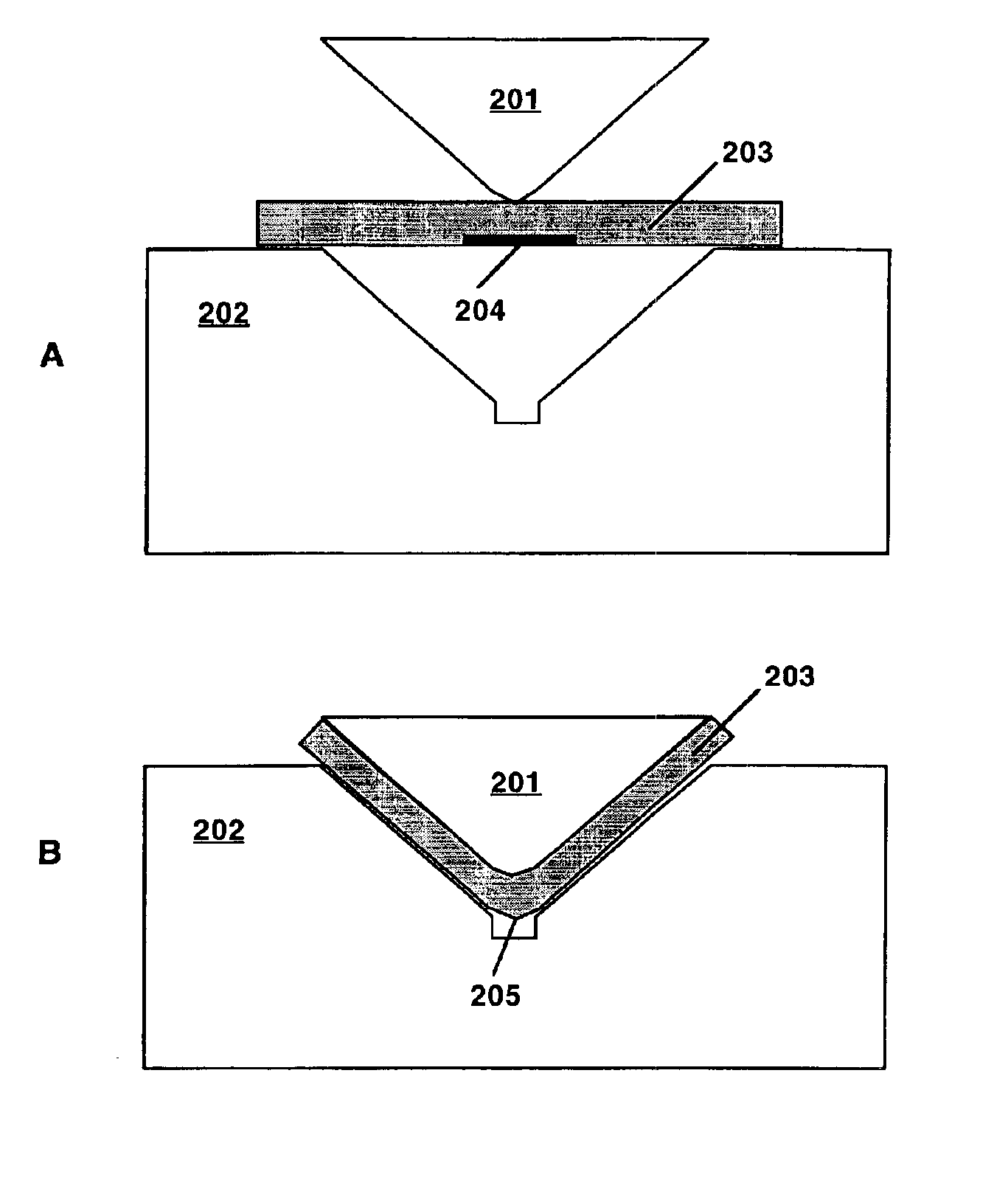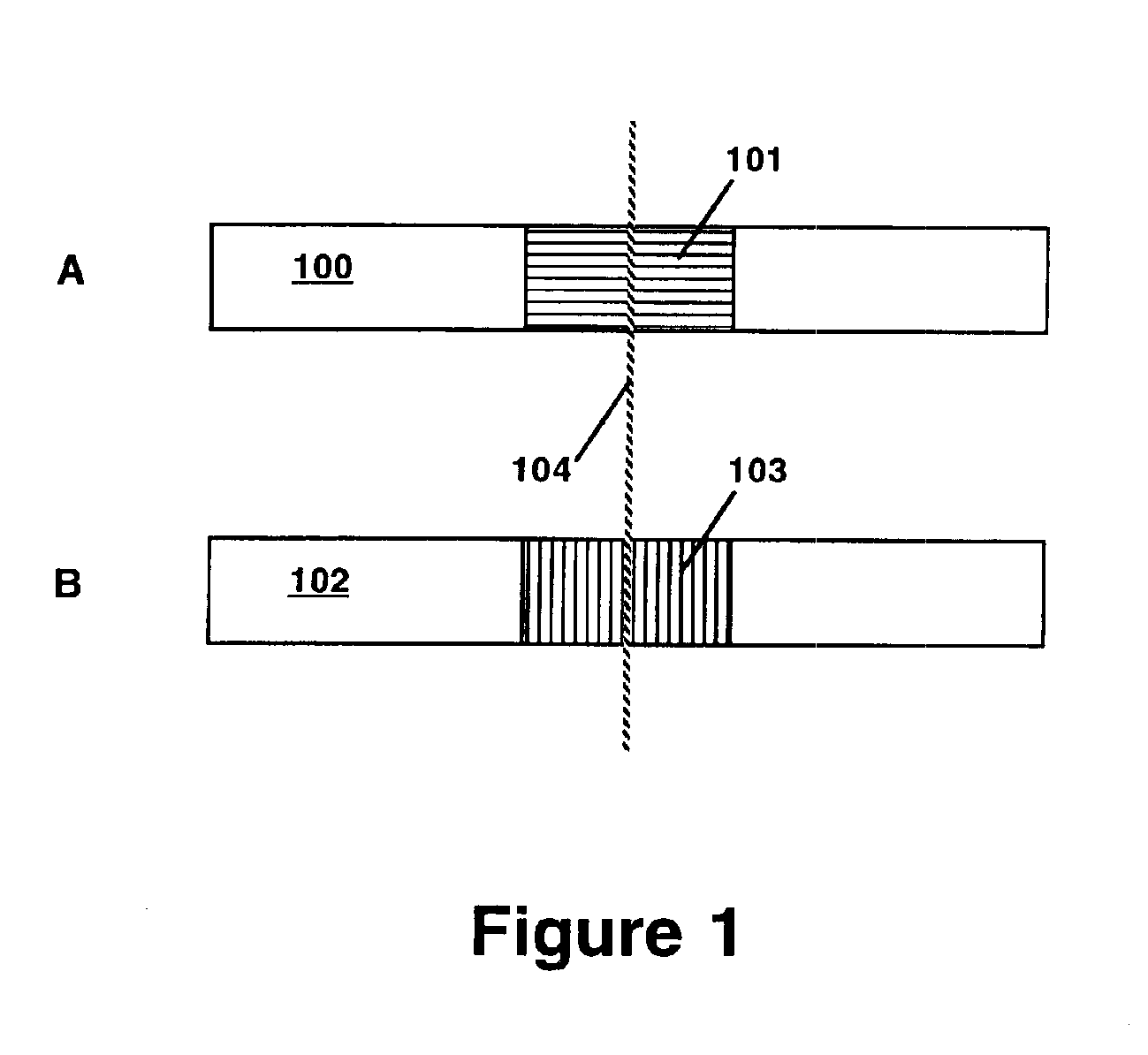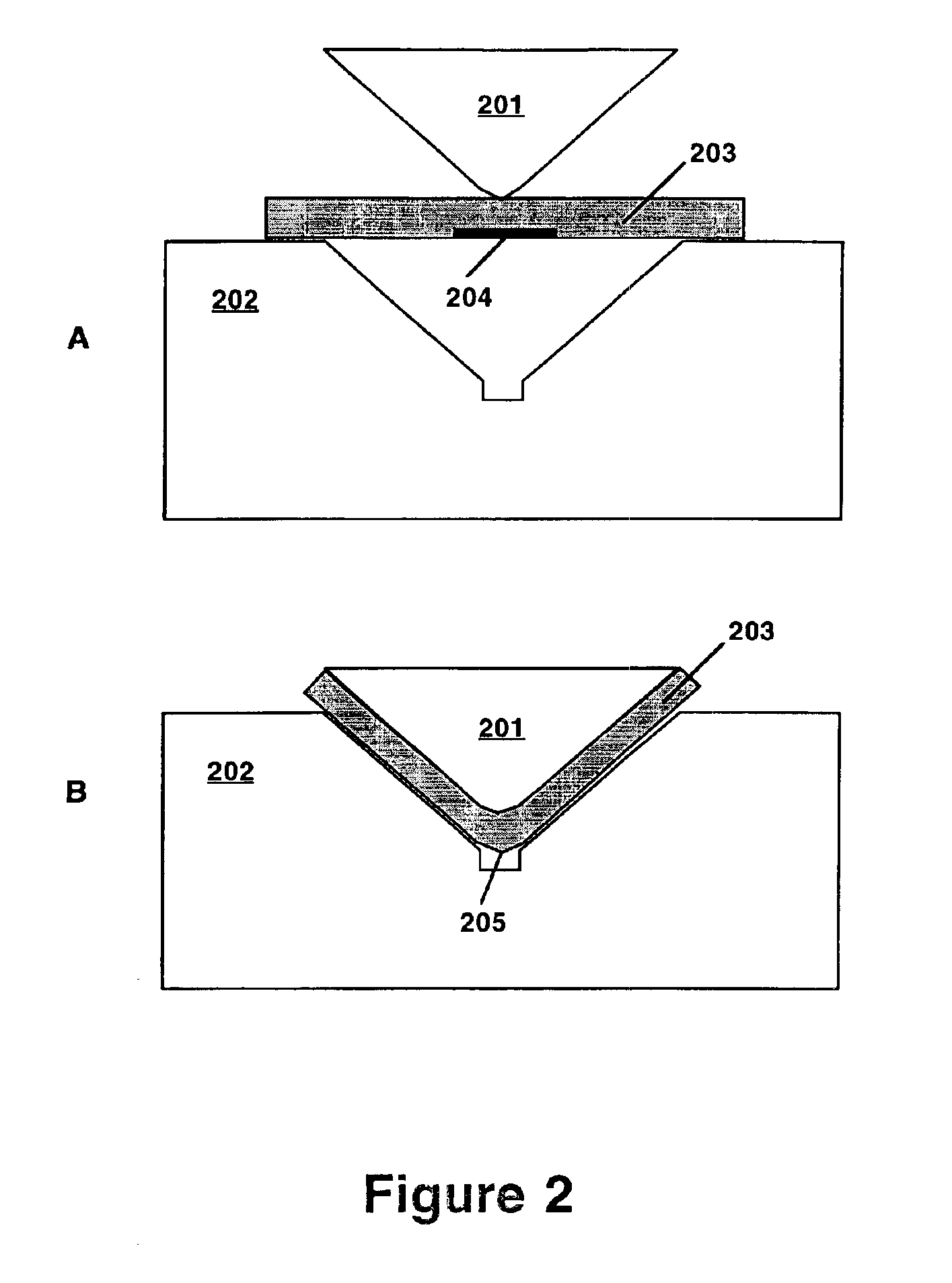Thick-section metal forming via friction stir processing
a technology of thick-section metal and friction stir, which is applied in the field of metal forming, can solve the problems of reducing the forming efficiency of thick aluminum materials, so as to reduce the formation of cracks, improve the forming efficiency, and reduce the forming difficulty
- Summary
- Abstract
- Description
- Claims
- Application Information
AI Technical Summary
Benefits of technology
Problems solved by technology
Method used
Image
Examples
example 1
An unprocessed aluminum plate bend tested at 200° C. to a bend angle of 75° exhibited several cracks in the tensile surface. The cracks were parallel to the bend line and the longest (near the bend line) was about one inch in length. Microscopic examination of cross-sections indicated that the cracks were several millimeters deep.
example 2
An unprocessed aluminum plate was bend tested at ambient temperature. At less than 40° bend angle, the plate fractured with a loud noise (significant energy release).
example 3
An unprocessed aluminum plate bend tested to an angle of 31° exhibited a small surface crack (parallel with the bend line), which was about 2 mm long and 0.5 mm wide (at the widest point near the midpoint of the crack). When removed from the punch and die assembly, this plate sprung back by more than 6° to a bend angle of less than 25 degrees.
PUM
| Property | Measurement | Unit |
|---|---|---|
| depth | aaaaa | aaaaa |
| diameter | aaaaa | aaaaa |
| diameter | aaaaa | aaaaa |
Abstract
Description
Claims
Application Information
 Login to View More
Login to View More - R&D
- Intellectual Property
- Life Sciences
- Materials
- Tech Scout
- Unparalleled Data Quality
- Higher Quality Content
- 60% Fewer Hallucinations
Browse by: Latest US Patents, China's latest patents, Technical Efficacy Thesaurus, Application Domain, Technology Topic, Popular Technical Reports.
© 2025 PatSnap. All rights reserved.Legal|Privacy policy|Modern Slavery Act Transparency Statement|Sitemap|About US| Contact US: help@patsnap.com



